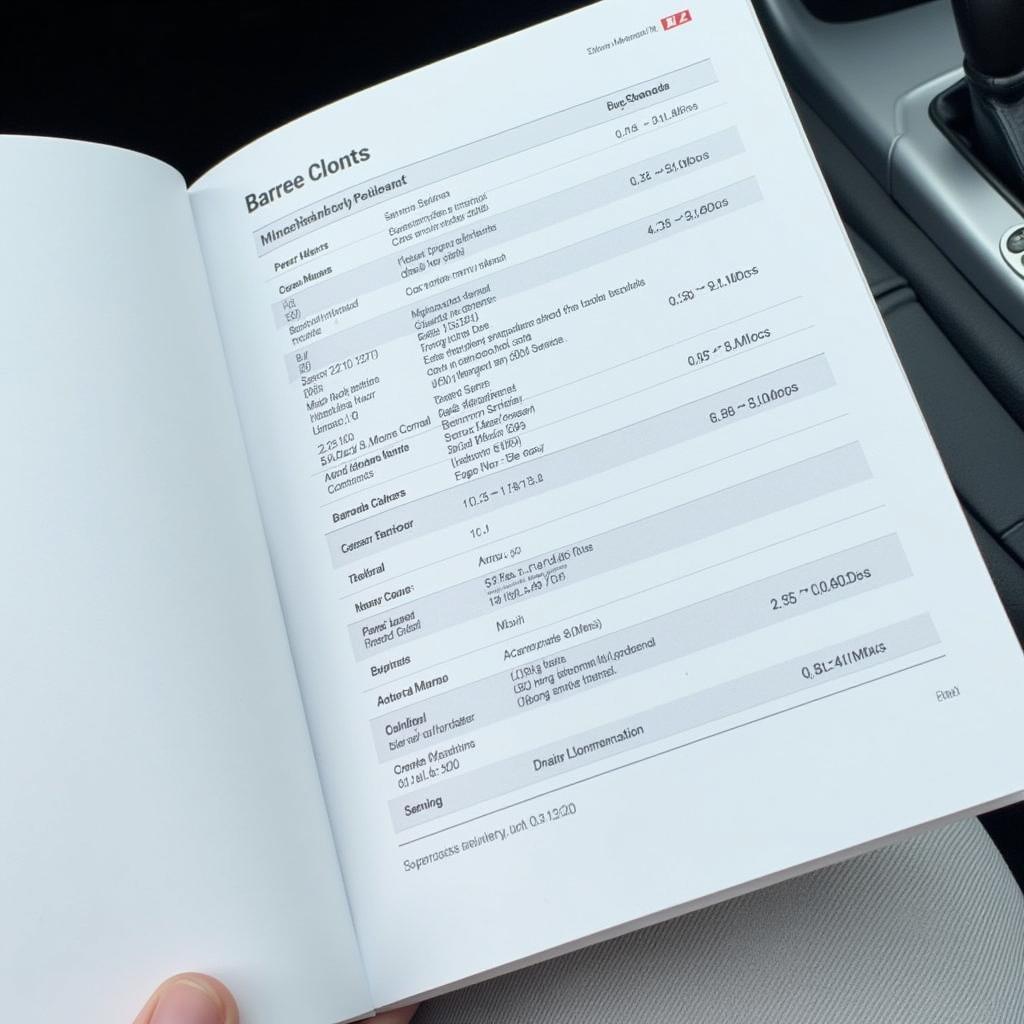How Often Does a New Car Need to Be Serviced?
Owning a new car is exciting, but it also comes with responsibilities like regular servicing. But How Often Does A New Car Need To Be Serviced? While there’s no one-size-fits-all answer, understanding your car’s specific needs and your driving habits is key to keeping it running smoothly for years to come.
Decoding Your Car’s Service Schedule
The best guide for your new car’s service intervals is the owner’s manual. Manufacturers put a lot of thought into creating a maintenance schedule tailored to your car model. This schedule outlines specific services needed at certain mileage milestones or time intervals, whichever comes first.
 New Car Service Schedule Open to the Recommended Maintenance Section
New Car Service Schedule Open to the Recommended Maintenance Section
Common Service Intervals for New Cars
While the specifics can vary, here are some common service intervals you might find in your new car’s manual:
-
Every 5,000 – 7,500 miles or 6 months: This typically involves an oil change, oil filter replacement, tire rotation, and a general inspection of essential components like brakes, fluids, and belts.
-
Every 15,000 – 30,000 miles or 12 months: More in-depth inspections are usually conducted at these milestones, including air filter replacement, spark plug check (for gasoline engines), and brake fluid flush.
-
Every 30,000 – 60,000 miles or 24 months: Major services like coolant flushes, transmission fluid changes (for automatic transmissions), and more extensive inspections may be recommended at these intervals.
Remember, these are just general guidelines. Your car manufacturer’s recommendations may differ based on your car model, driving conditions, and other factors.
Factors Influencing Service Frequency
Several factors beyond mileage and time can impact how often your new car needs a service:
-
Driving Conditions: Frequent stop-and-go city driving, driving in extreme temperatures, or hauling heavy loads can put more stress on your car, potentially requiring more frequent servicing.
-
Driving Style: Aggressive driving habits like hard braking and rapid acceleration can also necessitate more frequent maintenance.
-
Type of Oil: Using synthetic oil often allows for extended oil change intervals compared to conventional oil.
 Modern Car Navigating Congested City Streets
Modern Car Navigating Congested City Streets
“Modern cars are equipped with advanced sensors and onboard computers that track driving conditions and alert you when service is due,” says John Miller, Senior Automotive Engineer at CarServiceOnline. “However, staying proactive and understanding the factors that impact service frequency can help prevent unexpected issues and ensure your car’s longevity.”
Recognizing When Your Car Needs a Service
Apart from scheduled maintenance, your car will often give you signs that it’s time for a visit to the mechanic:
-
Warning Lights: Pay attention to any illuminated warning lights on your dashboard, like the check engine light or oil pressure light, and seek professional help if needed.
-
Unusual Noises: Any new or unusual sounds coming from your car, like squealing brakes or grinding gears, should be investigated by a mechanic.
-
Fluid Leaks: Unexplained puddles of fluid under your car could indicate a leak and require immediate attention.
-
Performance Issues: Changes in your car’s performance, such as decreased fuel efficiency, difficulty starting, or sluggish acceleration, might point to underlying maintenance needs.
Beyond the Basics: Additional Service Considerations
While following the manufacturer’s service schedule is crucial, certain situations may necessitate additional servicing:
-
Extreme Weather Conditions: Driving in extremely hot or cold climates might require more frequent checks of fluids, battery, and tire pressure.
-
Infrequent Driving: Even if you don’t drive your car often, it’s essential to have it serviced at least once a year to check for any fluid degradation or component wear due to sitting idle.
Conclusion
Knowing how often to service your new car is vital for its longevity and your safety on the road. While your owner’s manual provides the most accurate guide, understanding the factors impacting service frequency and recognizing warning signs can help you stay ahead of potential issues.

